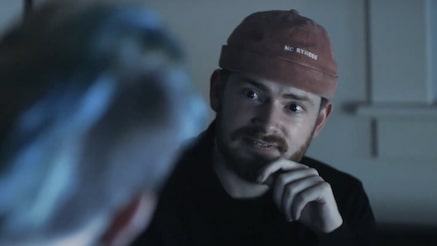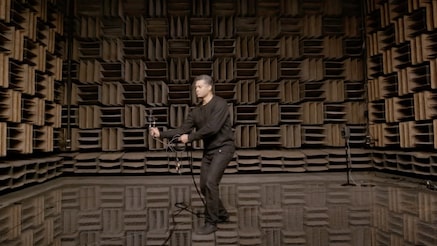The Murray Hill anechoic chamber, built in 1947, is the world's oldest wedge-based anechoic chamber. The interior room measures approximately 30 feet high by 28 feet wide by 32 feet deep. The exterior cement and brick walls are about 3 feet thick to reduce outside noise.
The name "anechoic" literally means "without echo." Large fiberglass wedges mounted on the interior surfaces of the chamber absorb echoes or reflections. The wedge-shaped absorbers are 4.5 feet long and 2 feet square at the base. Most current anechoic chambers utilize the alternating wedge pattern that was first used in the Murray Hill chamber. The wedge shape was chosen to "impedance match" the absorber to the surrounding air. The shape can also be considered to be a waveguide whereby all incident acoustic energy is internally reflected into the wedge. The alternating pattern was chosen to give more uniform angular absorption. The chamber absorbs more than 99.995 percent of the incident acoustic energy above 200 Hz. At one time the Murray Hill chamber was cited in the Guinness Book of World Records as the world's quietest room.
The anechoic chamber has been used to for psychoacoustic work relating to loudness. Fundamental work by Bell Labs in this area led to the establishment of the standard loudness contours that are still in use today.
The chamber has also been used to measure loudspeaker and microphone directivity and frequency response functions, simulated concert hall acoustics and sound propagation over impedence surfaces. The electret microphone was invented at Bell Labs. Measurements and verifications performed in the chamber played a key part in this invention, as well as further work in directional microphone systems.
Today, the anechoic chamber has become a key tool for artists and collaborators as part of the Experiments in Art and Technology (E.A.T.) program. Musicians and artists like Beatie Wolfe and Reeps 1 have used the chamber to push the boundaries of heard experiences.



